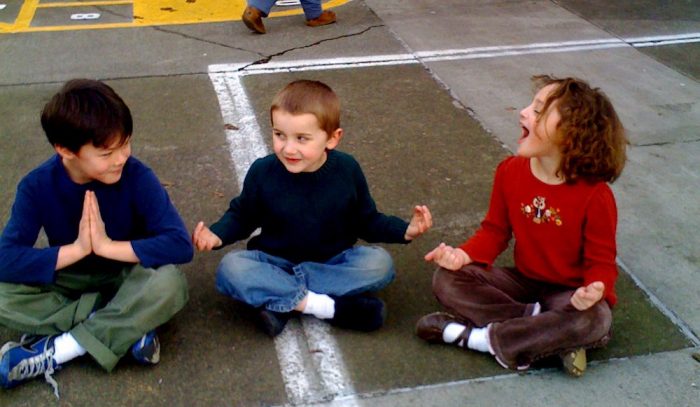You want to give your child a gift that will last them a lifetime, and you’ve found the perfect present: meditation.
Now all you have to do is to convince them to play with it.
It can be hard to know where to start when teaching your child(ren) to meditate. You suspect that they’d rather be playing with their toys, out with their friends, or watching their iPad. Each child is different; therefore, their experiences and practices will vary, so there’s no right or wrong way to teach them how to meditate. It’s good to teach children at a young age to meditate, as they have no prejudgments or reasons why not to practice.
In this post, we’ll discuss what meditation is, the benefits of it, and some helpful tips to introduce your child to meditation whatever their age.
What is Meditation?
Meditation is an exercise that brings you into the present moment. It allows you to relax and gain inner awareness and stillness that brings about a sense of peace and calmness. It’s allowing any thoughts to float on by, without reliving an event or judging yourself or others.
There are different types of meditation that can involve walking, yoga, dancing, and using sound. Meditation can be practised anywhere, for any length of time, and can be done with your eyes open or shut, and sitting, standing, or lying down.
The Benefits of Meditation
There are many benefits to meditation, and these will increase over time as your child gets to grips with sitting still and allowing meditation to take place.
Meditation can help your child to:
>> Build self-esteem
>> Overcome their shyness
>> Increase their creativity
>> Help them to concentrate
>> Relax
>> Sleep better
>> De-stress
>> Improve their school performance
>> Reduce anxiety
How to Teach your Child to Meditate
It’s important to mention that everyone’s meditation journey is unique. Meditation cannot be forced upon someone, even your own child. Forcing your child will probably put them off from wanting to learn.
Also, remember to be patient. It’s hard sitting still and quieting the mind, as there are so many distractions in our minds, bodies, and our surroundings. It takes time and practice to master.
10 Tips to Help your Child Meditate
- Allow your meditation practice to be an example to your child. Through watching you, your child may be interested in how and why you meditate, and this may encourage them to try.
- Practice yoga as a family. Striking yoga poses together can be fun. Stretching and laughing together can create a positive association to listening to your body and mind.
- Remove any objects that may distract them, such as their glasses, iPad, or toys.
- Allow them to choose whether they’d rather close their eyes, lower their gaze, or focus on an object such as a candle or a picture.
- Get comfortable. Let them find a position that suits them. This may be sitting up, sitting cross-legged, or lying down.
- Once they are settled, teach them to focus on their breath, as this allows them to focus on the here and now. There are different breathing techniques. It can be as easy as breathing in and breathing out at a steady pace.
- Make it fun by asking them to imagine that their tummies are balloons. With every breath in, they are deflating the balloon; with every breath out, they are blowing the balloon up.
- If your child is fidgeting and struggling to keep still, then readjust their positioning. Use cushions and blankets if it helps them to relax.
- Keep a sense of humour, as it’s important that this is fun, relaxed, and a safe space to be.
- Laugh at yourself. If you find yourself getting angry or flustered, then say that you need to spend some time in meditation to calm down.
In Closing
The goal you want to move toward is to help your child calm their mind. It doesn’t matter how long they do this for, or whether it’s perfect or not. Just watching you meditate and being calm plants a seed in their minds that this gift exists and is there for them at any time.
Remember, you want your child to be attracted to meditation. Be an example in your practice and in your responses to others. Be patient and gentle, and if they choose to receive the gift of meditation, it will be the one present that they’ll never forget.









Read 0 comments and reply